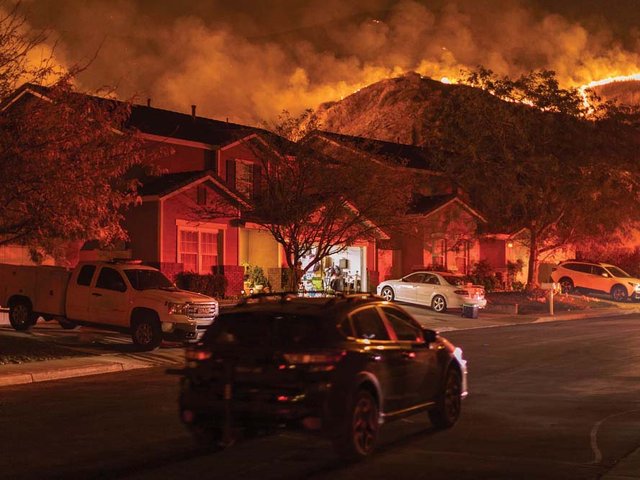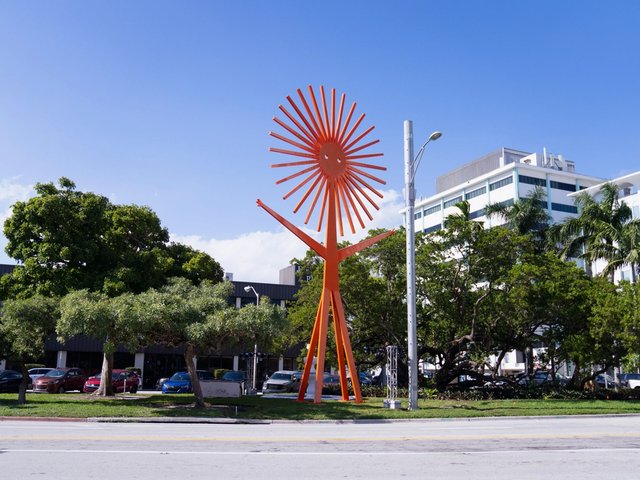As the world starts to see the effects of climate change on a magnified scale, works of art once considered to be stored safely are now at risk of being lost forever, a headache for collectors who are facing increasing premiums and unattainable insurance policies.
A recent example of the impact climate change has had on the insurance market was seen in 2017 in the US where the insurance industry lost more than $300bn due to a series of hurricanes that affected the Gulf Coast.
Flash floods, heatwaves and wildfires have dominated global headlines in recent years. As a result of these alarming weather patterns, the art world is paying increasing attention to how fine art and specie (high-value, portable items) must be handled, transported, displayed and stored.
Analysing risk
Across the world, insurance analysts are researching climate change data to assess the potential dangers, mitigate risk and communicate the likely outcomes for collectors. Whilst most insurers offer “all-risks” policies for works of art, as climate change intensifies, it will become commonplace for higher-risk locations, such as earthquake or flooding zones, to incorporate a higher premium (perhaps even a specific exclusion) for any work of art stored at that location.
Turning point
There is no doubt that the fine art insurance market is at a turning point, with the future more uncertain than ever raising questions. For example, can art galleries located in expanding flood zones such as Miami or Venice still be justified?
Now is the time to discuss significant building upgrades, alternative storage facilities or, perhaps, a complete move in location for these well-known art destinations. Such a prospect may seem unfathomable to many. But so is the climate crisis we face and the art market may be forced to adapt to the challenges ahead in unprecedented ways.
For now, collectors are fortunate in that weather warnings will usually provide sufficient notice to safely remove their art collection from the affected area, although some emergencies (specifically wildfires) progress quickly and make retrieval impossible.
To safeguard works of art, most insurers and brokers offer services to monitor the weather and inform policyholders if their collection could be at risk.
Storage facilities
Such is the level of rising risk that increasingly secure storage facilities are becoming a focus for collectors. Except this time the enemy is climatic and not criminal.
If art collectors are unable to obtain insurance, additional precautions should be taken to protect the art. For example, art collectors living in areas deemed high risk should secure their art in a weather secure storage facility to avoid the art getting damaged, and depreciating in value due such damage. In this type of situation, subterranean vaults are something that should be considered especially if insurers refuse to indemnify fine art in regions considered high risk.
What regions are considered the most dangerous? In the US, California is the state most vulnerable to natural disasters, with seven of the top 10 most at risk US cities located in that state. Meanwhile, Greece is one of the world’s most seismically active countries and also experiences severe wildfires, as seen last August. Climate change therefore poses a significant threat to the country's wealth of ancient architecture and artefacts.
New insurance options
Underwriters have long been concerned about the impact of climate change on the catastrophe models used for pricing premiums. An alternative insurance option could be parametric insurance.
Whilst still based on similar catastrophe models, parametric insurance offers a pre-specified pay-out on the occurrence of a specific trigger event, for example if the trigger was an earthquake measuring over four on the Richter scale, the parametric insurance would automatically pay out if an earthquake of this magnitude occurred.
These policies may streamline the process and make the losses more predictable. However, when it comes to parametric insurance for fine art, it must be remembered that insuring art is not the same as insuring something that is replaceable—a piece of art, once lost, is lost forever.
- Catrin Povey is an insurance associate in the Financial Services and Insurance team at Capital Law.





